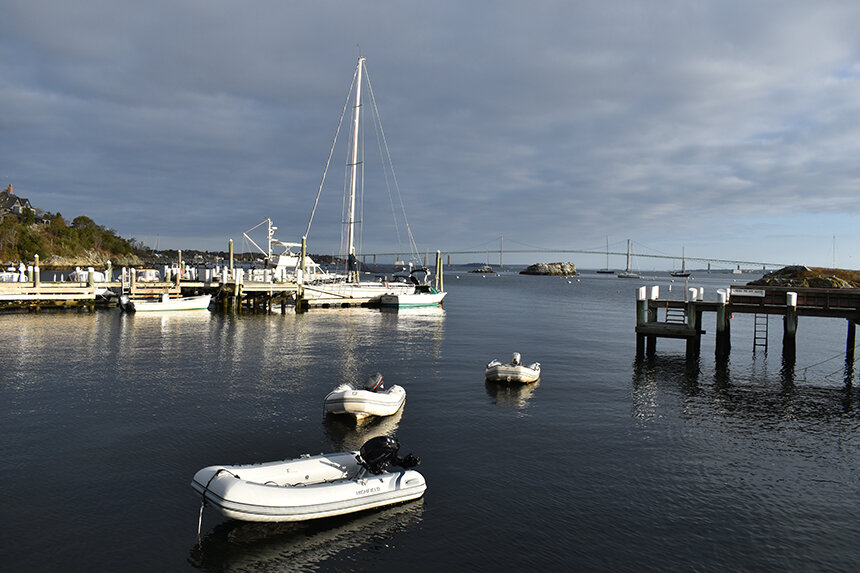Series of Bills Would Revamp Ocean State’s Coastal Management Agency
April 24, 2023
PROVIDENCE — The calls for reforming the state’s coastal management agency are growing stronger in the General Assembly.
Last week, members of the Senate Environment and Agriculture Committee heard a package of five bills to overhaul the Coastal Resources Management Council, the regulatory agency responsible for permitting offshore wind, aquaculture, and development along Rhode Island’s more than 400 miles of coastline.
Unusually for state agencies, CRMC’s final decision-making authority lies with a 10-member council, on which nine seats are appointed by the governor, and the council has no coastal policy expertise requirements for its members. Members representing specific communities are required to be appointed or elected officials within that community, although that rule often hasn’t been enforced.
As a result, the council has attracted increased scrutiny over its decisions in recent years.
“People feel like there could be a lack of transparency of the [permitting] process that could use some improvement,” committee chair Sen. Alana DiMario, D-North Kingstown, said.
In 2021, the CRMC board came under fire for its secret backroom deal to approve the expansion of Champlin’s Marina & Resort on Block Island that ultimately excluded the town of New Shoreham and other intervenors from the process. The Rhode Island Supreme Court ended the nearly 20-year legal battle over the expansion last October, when it overturned the agreement and denied Champlin’s the right to expand.
The Champlin’s controversy prompted Senate leadership to halt the fast-tracking of several of then-Gov. Gina Raimondo’s nominees for the CRMC executive body and prompted the formation of a House study commission, chaired by then-Rep. Deb Ruggiero, D-Jamestown.
“We spent 10 months doing a deep dive [into the CRMC issues],” Ruggiero told lawmakers at the recent committee hearing. “Those conversations hadn’t happened for 30 or 40 years. Our final report is a thoughtful blueprint for the Legislature.”
Some of the legislation aired last week is more aggressive than some of the recommendations issued by the study commission last spring.
S0772, introduced by Sen. Victoria Gu, D-Westerly, would radically reshape CRMC’s structure, turning it into a traditional state agency called the Department of Coastal Resources, with an executive director who reports to the governor instead of an appointed council.
Under the legislation, the council would still exist, but would turn into an advisory body instead of an empowered executive force.
Daniel Prentiss, an attorney in the Champlin’s case and a former council member, told lawmakers that many appointees, himself included, did not have the expertise required to adequately serve on the CRMC board.
“I was not a competent decision-maker based on reading thousands of pages of dry transcript,” Prentiss said. “Relating that to engineering exhibits and marine wildlife exhibits, that’s not a way to make decisions.”
A bill (S0194) introduced by Sen. Susan Sosnowski, D-South Kingstown, would try to fix the issue by mandating the council receive a supermajority of three-fifths members to override any recommendation from CRMC staff. Another bill introduced by Sosnowski, S0197, would change the makeup of the council to include public members such as a licensed and active angler, a representative from Save The Bay, and another seat for representation by a developer’s organization.
It’s unlikely even if Gu’s bill passes that structural reform to the council would come quickly. Any changes to the council structure, its permitting process, or enforcement requires approval from the National Oceanic Atmospheric Administration, something which Ruggiero herself last year characterized as a “heavy lift.”
The General Assembly would have to pass final legislation outlining the changes to CRMC before those changes are presented to NOAA for its consideration, and approval from NOAA could take as long as six months.
Unlike its land-based counterpart, the Department of Environmental Management, CRMC isn’t beholden only to state law. Much of its work and authority is derived from the National Coastal Zone Management Program, which is run by NOAA. States that manage their coastlines opt-in to the program, which comes with federal dollars for agency funding every year, but they also have to follow federal laws about what they are allowed to do.
CRMC, a tiny agency even by Rhode Island standards with about 30 full-time employees, derives half its budget, around $2.5 million depending on the year, from the federal government, with another half, typically about $2.5 million, from state government.
During a presentation to lawmakers last week, CRMC director Jeff Willis told senators he included requests for more personnel in his agency’s budget proposal last fall.
“We asked for a couple policy analysts, a couple engineers, a couple biologists,” Willis said. “I’ve been asking very consistently for years for those positions to be filled.”
Successive governors have chosen to keep CRMC at level funding for years now and Willis said even with the influx of offshore wind projects, he was doing his best to juggle staff around as needed.
Other bills under consideration in the Senate would force the state to follow its own laws regarding the agency. S0501, introduced by DiMario, codifies a staff attorney for the agency staff into law.
The council’s legal representation, Anthony DeSisto, an attorney and lobbyist on Smith Hill, is only supposed to represent the council; representing the rest of the agency or staff would be a serious conflict of interest, and during council meetings staff receive no legal representation.
Meanwhile, the council this year has struggled to again maintain quorum, a key requirement needed for any public body that votes to take action. There has not been a full meeting of CRMC’s executive body since the end of February, with a total of eight canceled council or council subcommittee meetings this year.
The council had similar difficulty last year maintaining quorum, and as a result, projects seeking approval were stalled. Part of the issue is the executive body is not fully staffed, with only seven people serving out of 10 seats on the council. Gov. Dan McKee has not appointed any new members to the council since last year. And, since the appointments need to be confirmed by the Senate, the window to get more bodies on the council is closing fast, with the Legislature expected to conclude its business in June.
“The quorum didn’t exist [last year] so a lot of matters got delayed or postponed,” Ruggiero said. “That’s now how we do the people’s business, right?”
The bills in the Senate were held for further study. Similar legislation in the House to reform the agency got a hearing last month and was also held for further study.




These reforms are sorely needed to insure that members of the Council are competent enough to rule on matters relating to coastal resources. These should be appointments based solely on knowledge and expertise not on whether you are politically connected or not.
There is no excuse for Governor McKee not filling the vacancies on the Council.
Please add credibility and respectability to the Coastal Resources Management Council.